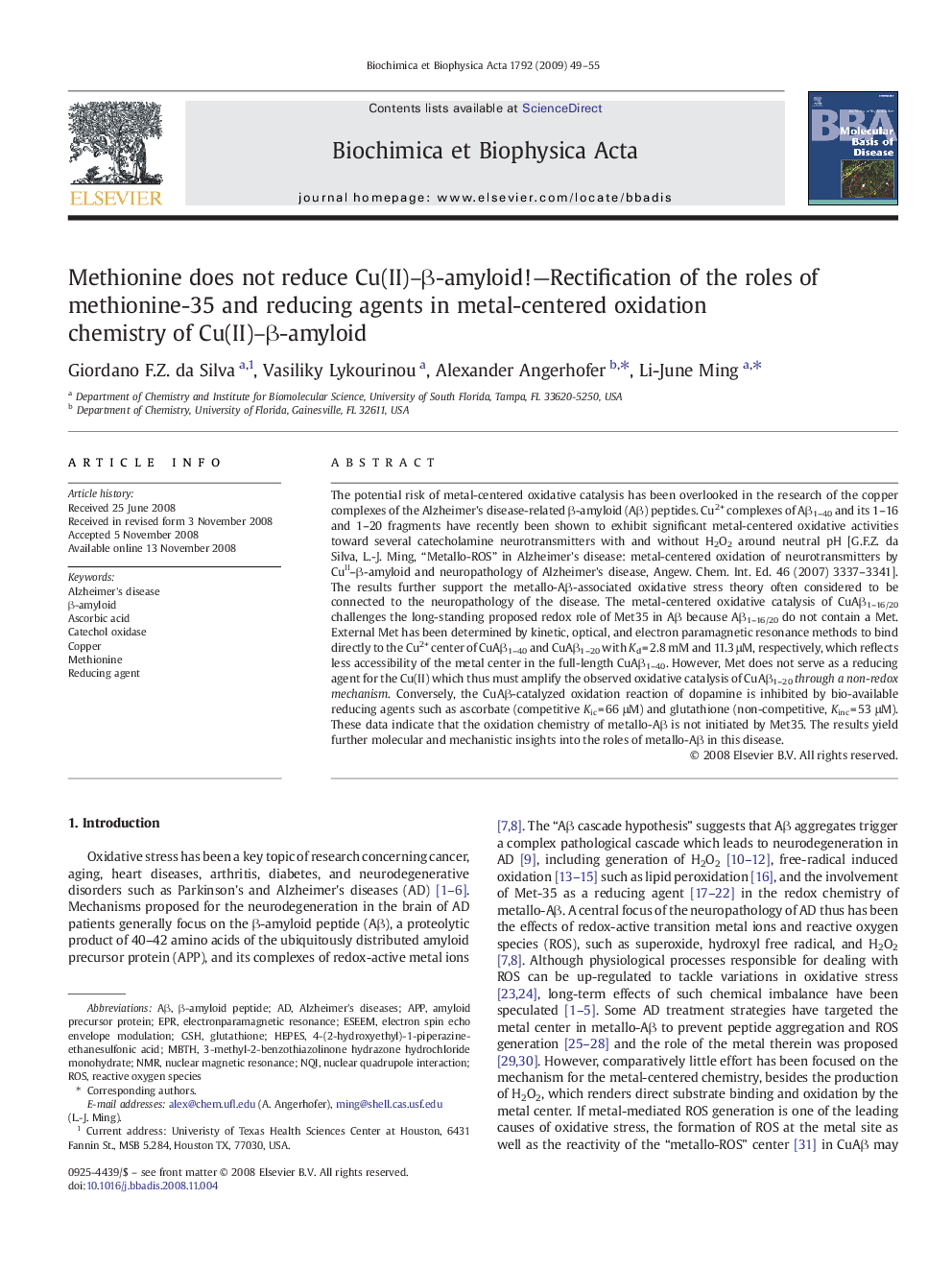| Article ID | Journal | Published Year | Pages | File Type |
|---|---|---|---|---|
| 1905589 | Biochimica et Biophysica Acta (BBA) - Molecular Basis of Disease | 2009 | 7 Pages |
The potential risk of metal-centered oxidative catalysis has been overlooked in the research of the copper complexes of the Alzheimer's disease-related β-amyloid (Aβ) peptides. Cu2+ complexes of Aβ1–40 and its 1–16 and 1–20 fragments have recently been shown to exhibit significant metal-centered oxidative activities toward several catecholamine neurotransmitters with and without H2O2 around neutral pH [G.F.Z. da Silva, L.-J. Ming, “Metallo-ROS” in Alzheimer's disease: metal-centered oxidation of neurotransmitters by CuII–β-amyloid and neuropathology of Alzheimer's disease, Angew. Chem. Int. Ed. 46 (2007) 3337–3341]. The results further support the metallo-Aβ-associated oxidative stress theory often considered to be connected to the neuropathology of the disease. The metal-centered oxidative catalysis of CuAβ1–16/20 challenges the long-standing proposed redox role of Met35 in Aβ because Aβ1–16/20 do not contain a Met. External Met has been determined by kinetic, optical, and electron paramagnetic resonance methods to bind directly to the Cu2+ center of CuAβ1–40 and CuAβ1–20 with Kd = 2.8 mM and 11.3 μM, respectively, which reflects less accessibility of the metal center in the full-length CuAβ1–40. However, Met does not serve as a reducing agent for the Cu(II) which thus must amplify the observed oxidative catalysis of CuAβ1–20through a non-redox mechanism. Conversely, the CuAβ-catalyzed oxidation reaction of dopamine is inhibited by bio-available reducing agents such as ascorbate (competitive Kic = 66 μM) and glutathione (non-competitive, Kinc = 53 μM). These data indicate that the oxidation chemistry of metallo-Aβ is not initiated by Met35. The results yield further molecular and mechanistic insights into the roles of metallo-Aβ in this disease.
